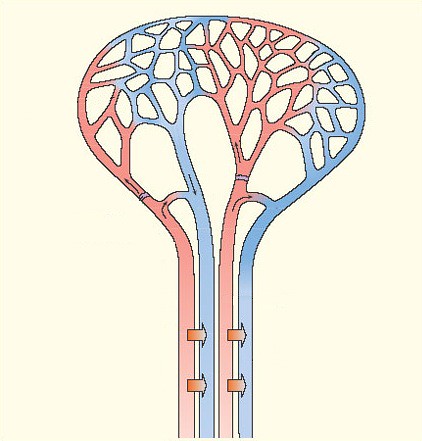
Lucia Zarate was a famous 19th century dwarf and, at just over 2 kg, the lightest adult person ever to be recorded. Her untimely death when she got trapped in a snowstorm acts as a warning. The smaller body is much more sensitive to external temperature change because of its greater surface area (skin) by weight. If we decide to shrink there is little doubt we’ll need several fundamental physical adaptations to overcome the considerable challenges to the human body. One such physical challenge are the dangers of hypo– and hyperthermia, conditions in which the core temperature of the body drops below or above the required temperature for normal metabolism.
Small animals in extreme climatic conditions have various ways to deal with temperature that could inspire specific genetic alterations. One such strategy is nonshivering thermogenesis of brown fat which we discussed HERE before. Another clever evolutionary development is the rete mirabile. It is a complex of arteries and veins that all touch each other. The rete utilizes countercurrent blood flow within the net. By blood flowing in opposite directions it exchanges heat between vessel walls so that the two bloodstreams within the net stabilize body temperature. Both hypothermal and hyperthermal species have this special disposition of vessels that allows their vital organs and brain to remain at a more moderate temperature than the rest of the body. Since The Incredible Shrinking Man already will be small and compact and its veins and arteries will be relatively close together the development of a rete mirabile could be one possible solution to the challenges of heat and cold.